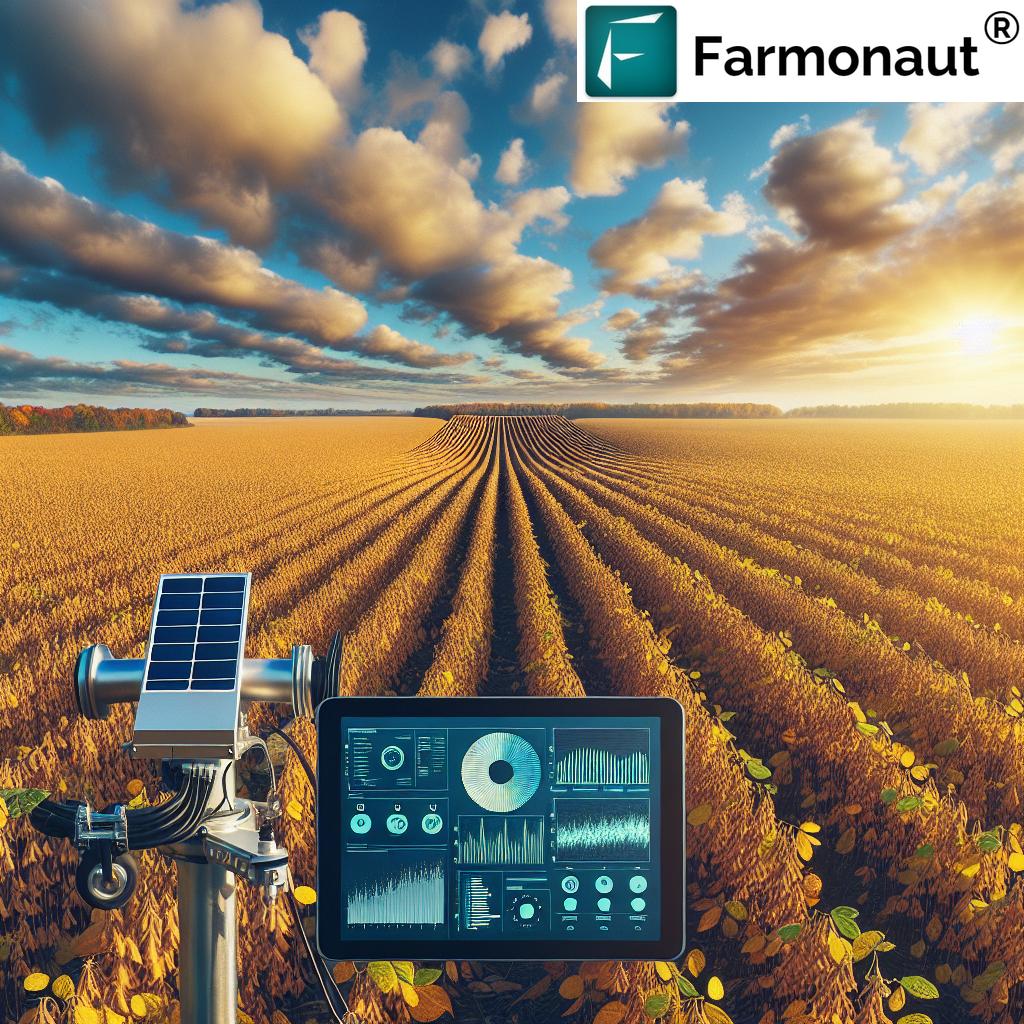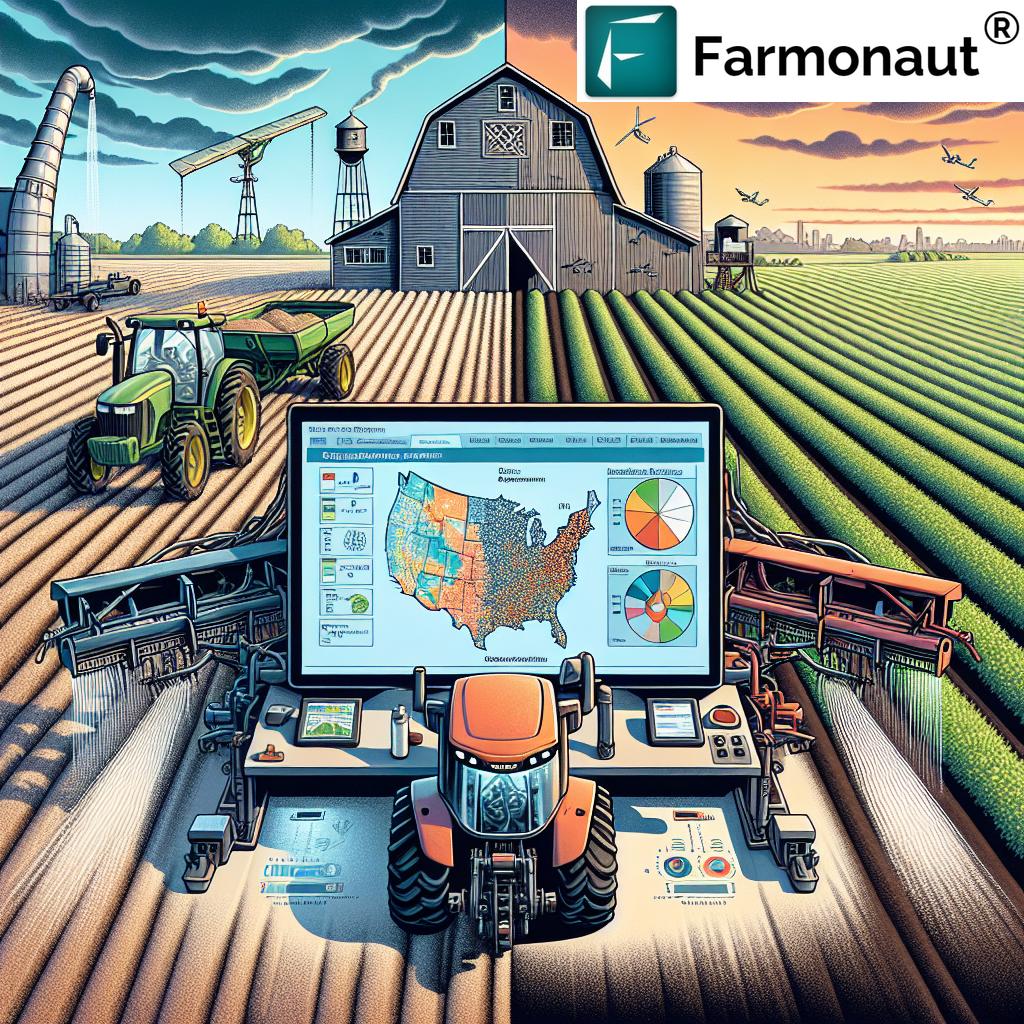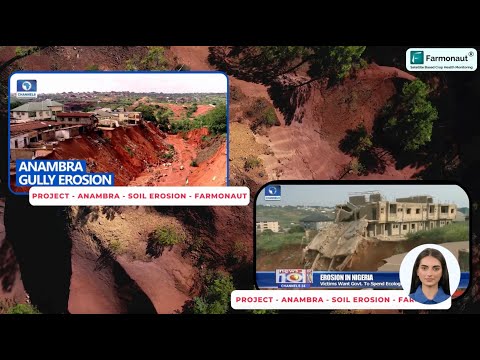Revolutionizing Ontario Farming: Precision Agriculture Technology for Optimal Soybean Yields and Nutrient Management

“Ontario farmers using precision agriculture technology have seen up to 15% increase in soybean yields.”
Welcome to the future of farming in Ontario! We’re excited to take you on a journey through the revolutionary world of precision agriculture technology and its transformative impact on soybean yields and nutrient management. As we delve into this topic, we’ll explore how farmers across rural Ontario are embracing innovative solutions to overcome challenges and optimize their agricultural operations.
The Dawn of Precision Agriculture in Ontario
In recent years, the agricultural landscape of Ontario has undergone a significant transformation. The introduction of precision agriculture technology has ushered in a new era of farming, one that combines traditional knowledge with cutting-edge innovations. This shift is particularly evident in the cultivation of soybeans, one of Ontario’s key crops.
Precision agriculture technology encompasses a wide range of tools and techniques designed to enhance farm productivity, reduce environmental impact, and optimize resource use. From satellite-based crop monitoring systems to AI-driven advisory tools, these technologies are revolutionizing the way we approach farming in rural Ontario.
Soybean Yield Optimization: A Game-Changer for Ontario Farmers
Soybean cultivation has long been a cornerstone of Ontario’s agricultural sector. However, with increasing challenges such as climate variability and market pressures, farmers are constantly seeking ways to improve yields and efficiency. This is where precision agriculture technology comes into play, offering unprecedented opportunities for soybean yield optimization.
- Satellite-Based Crop Monitoring: Advanced satellite imaging technology, such as that offered by Farmonaut, provides farmers with real-time insights into crop health, allowing for timely interventions and optimized resource allocation.
- Soil Nutrient Sensors: These devices offer precise data on soil composition, enabling farmers to tailor their fertilizer applications for maximum effectiveness.
- Weather Prediction Models: Accurate weather forecasting helps farmers make informed decisions about planting, irrigation, and harvesting, crucial for optimizing soybean yields.
By leveraging these technologies, Ontario soybean farmers are seeing significant improvements in their crop performance and overall farm productivity.
Crop Nutrient Management: Precision and Efficiency
Effective crop nutrient management is crucial for achieving optimal soybean yields while maintaining environmental sustainability. Precision agriculture technology has revolutionized this aspect of farming in Ontario by providing tools for accurate assessment and application of nutrients.
- GPS-Guided Fertilizer Application: This technology ensures precise distribution of fertilizers, reducing waste and optimizing nutrient uptake by soybean plants.
- Drone-Based Imaging: Drones equipped with multispectral cameras can detect nutrient deficiencies in crops before they become visible to the naked eye, allowing for early intervention.
- AI-Powered Nutrient Recommendations: Advanced algorithms analyze soil data, crop history, and environmental factors to provide tailored nutrient management advice.
These innovations not only boost crop performance but also contribute to sustainable farming practices by minimizing nutrient runoff and reducing the environmental impact of fertilizer use.
Explore Farmonaut’s precision agriculture solutions

Automated Crop Monitoring: The Eyes in the Sky
One of the most significant advancements in precision agriculture is the development of automated crop monitoring systems. These systems use a combination of satellite imagery, drone technology, and ground-based sensors to provide farmers with a comprehensive view of their fields.
- Real-Time Crop Health Assessment: Satellite-based monitoring, like that provided by Farmonaut, offers regular updates on crop health, allowing farmers to identify and address issues promptly.
- Pest and Disease Detection: Advanced imaging techniques can detect early signs of pest infestations or disease outbreaks, enabling targeted interventions.
- Yield Prediction: By analyzing historical data and current crop conditions, these systems can provide accurate yield forecasts, helping farmers plan their harvest and market strategies.
Automated crop monitoring has become an invaluable tool for Ontario soybean farmers, providing insights that were previously unattainable and enabling data-driven decision-making.
Sustainable Fertilizer Practices: Balancing Productivity and Environmental Stewardship
“Sustainable fertilizer practices in Ontario have reduced nutrient runoff by approximately 20% in the last 5 years.”
As Ontario farmers strive to increase soybean yields, there’s a growing emphasis on adopting sustainable fertilizer practices. Precision agriculture technology plays a crucial role in this effort, enabling farmers to optimize fertilizer use while minimizing environmental impact.
- Variable Rate Application: This technology allows farmers to apply different amounts of fertilizer to different parts of their fields based on soil needs, reducing overall fertilizer use.
- Slow-Release Fertilizers: These innovative products release nutrients gradually, matching the uptake rate of soybean plants and reducing nutrient leaching.
- Microbial Fertilizers: Harnessing beneficial soil microorganisms can enhance nutrient availability and reduce the need for chemical fertilizers.
By embracing these sustainable practices, Ontario farmers are not only improving their soybean yields but also contributing to a healthier environment.
Access Farmonaut’s API for advanced agricultural data
Digital Agriculture Innovations: The Future is Now
The digital revolution has touched every aspect of our lives, and agriculture is no exception. In Ontario, digital agriculture innovations are transforming farms, making them more efficient, productive, and sustainable.
- IoT Sensors: Internet of Things (IoT) devices placed throughout fields provide real-time data on soil moisture, temperature, and other critical parameters.
- Big Data Analytics: Advanced algorithms process vast amounts of agricultural data, providing insights that guide farm management decisions.
- Blockchain Technology: This innovative technology is being used to enhance traceability in the agricultural supply chain, ensuring food safety and transparency.
These digital innovations are not just improving farm operations; they’re also opening up new possibilities for sustainable and efficient soybean cultivation in Ontario.

Malting Barley Cultivation: Diversifying Ontario’s Agricultural Landscape
While soybeans remain a crucial crop for Ontario, many farmers are exploring diversification strategies to enhance their resilience and profitability. Malting barley cultivation has emerged as a promising option, benefiting from the same precision agriculture technologies used in soybean farming.
- Climate Suitability Analysis: Advanced modeling tools help farmers determine the best areas for malting barley cultivation based on climate data.
- Quality Control Sensors: Precision sensors monitor barley quality parameters throughout the growing season, ensuring it meets malting standards.
- Market Integration Platforms: Digital platforms connect barley growers with maltsters and breweries, streamlining the supply chain.
By incorporating malting barley into their crop rotations, Ontario farmers are not only diversifying their income streams but also enhancing soil health and crop resilience.
Navigating Challenges: Infrastructure and Rural Development
While precision agriculture technology offers immense potential, its implementation in rural Ontario faces several challenges. Addressing these issues is crucial for the widespread adoption of these innovative farming practices.
- Internet Connectivity: Many precision agriculture tools rely on reliable internet access, which can be limited in rural areas. Efforts are underway to improve broadband infrastructure across Ontario.
- Rail Maintenance: Efficient transportation is vital for the agricultural sector. Ongoing rail maintenance and upgrades are essential to ensure smooth logistics for crop transport.
- Rural Childcare: Access to childcare services in rural areas can impact farm labor availability. Initiatives to improve rural childcare options are being explored to support farming families.
Addressing these infrastructural and social challenges is key to fully realizing the benefits of precision agriculture technology in Ontario’s farming communities.
Explore Farmonaut’s API Developer Documentation
The Economic Impact: Fertilizer Prices and Farm Profitability
The adoption of precision agriculture technology in Ontario is closely tied to economic factors, particularly the fluctuating costs of farm inputs like fertilizers. Understanding this economic landscape is crucial for farmers looking to invest in new technologies.
- Cost-Benefit Analysis: Precision agriculture tools often require significant initial investment but can lead to long-term savings and increased profitability.
- Fertilizer Price Trends: By optimizing fertilizer use, precision agriculture can help farmers mitigate the impact of rising fertilizer prices.
- Government Incentives: Various programs and incentives are available to support Ontario farmers in adopting sustainable and efficient farming practices.
As farmers navigate these economic considerations, the long-term benefits of precision agriculture in terms of increased yields and resource efficiency become increasingly apparent.

Looking Ahead: The Future of Ontario Agriculture
As we look to the future, it’s clear that precision agriculture technology will continue to play a pivotal role in shaping Ontario’s agricultural landscape. From soybean yield optimization to sustainable nutrient management, these innovations are paving the way for a more productive and environmentally friendly farming sector.
- Continued Technological Advancements: We can expect further innovations in areas such as AI-driven crop management and autonomous farming equipment.
- Integration of Multiple Data Sources: The future will likely see even more sophisticated systems that combine data from various sources to provide comprehensive farm management solutions.
- Emphasis on Sustainability: As environmental concerns grow, precision agriculture will play a crucial role in helping farmers adapt to climate change and reduce their ecological footprint.
By embracing these technologies and practices, Ontario farmers are not just adapting to change – they’re leading the way in agricultural innovation.
Precision Agriculture Technology Comparison for Ontario Soybean Farming
| Technology Name | Primary Function | Estimated Cost Range | Potential Yield Increase (%) | Nutrient Management Efficiency (Scale 1-10) | Environmental Impact | Implementation Difficulty |
|---|---|---|---|---|---|---|
| Automated Crop Monitoring Systems | Real-time crop health assessment | $5,000 – $15,000 | 10-15% | 9 | Low | Moderate |
| Soil Nutrient Sensors | Precise soil composition analysis | $2,000 – $8,000 | 5-10% | 8 | Low | Easy |
| Drone-based Imaging | Detailed crop imagery and analysis | $3,000 – $10,000 | 8-12% | 7 | Low | Moderate |
| GPS-guided Fertilizer Application | Precise fertilizer distribution | $10,000 – $30,000 | 7-12% | 9 | Medium | Complex |
| Weather Prediction Models | Accurate local weather forecasting | $1,000 – $5,000 (subscription) | 3-7% | 6 | Low | Easy |
| Crop Performance Analytics Software | Data-driven farm management | $2,000 – $10,000 (annual) | 5-10% | 8 | Low | Moderate |
Embracing the Precision Agriculture Revolution
As we wrap up our exploration of precision agriculture technology in Ontario, it’s clear that we’re witnessing a transformative period in farming. From optimizing soybean yields to implementing sustainable nutrient management practices, these innovations are reshaping the agricultural landscape.
The journey towards fully embracing precision agriculture is ongoing, with challenges to overcome and new frontiers to explore. However, the potential benefits – increased productivity, improved sustainability, and enhanced farm profitability – make this a journey worth undertaking.
For Ontario farmers looking to take the next step in their precision agriculture journey, tools like Farmonaut offer accessible and powerful solutions. By leveraging satellite technology and AI-driven insights, farmers can gain a deeper understanding of their crops and make more informed decisions.
As we look to the future, one thing is certain: precision agriculture technology will continue to play a vital role in ensuring Ontario’s farming sector remains competitive, sustainable, and resilient in the face of global challenges.
FAQs
- What is precision agriculture technology?
Precision agriculture technology refers to the use of advanced tools and techniques, such as satellite imaging, GPS-guided equipment, and data analytics, to optimize farming practices and increase crop yields while minimizing resource use. - How does precision agriculture benefit soybean farmers in Ontario?
It helps farmers optimize yields through precise nutrient management, early detection of crop issues, and efficient resource allocation, leading to increased productivity and profitability. - What are some common precision agriculture tools used in Ontario?
Common tools include satellite-based crop monitoring systems, soil nutrient sensors, GPS-guided fertilizer applicators, and weather prediction models. - How does precision agriculture contribute to sustainable farming?
By optimizing resource use, precision agriculture reduces waste, minimizes environmental impact, and promotes sustainable farming practices. - What challenges do Ontario farmers face in adopting precision agriculture technology?
Challenges include initial investment costs, rural internet connectivity issues, and the need for training to effectively use new technologies.




